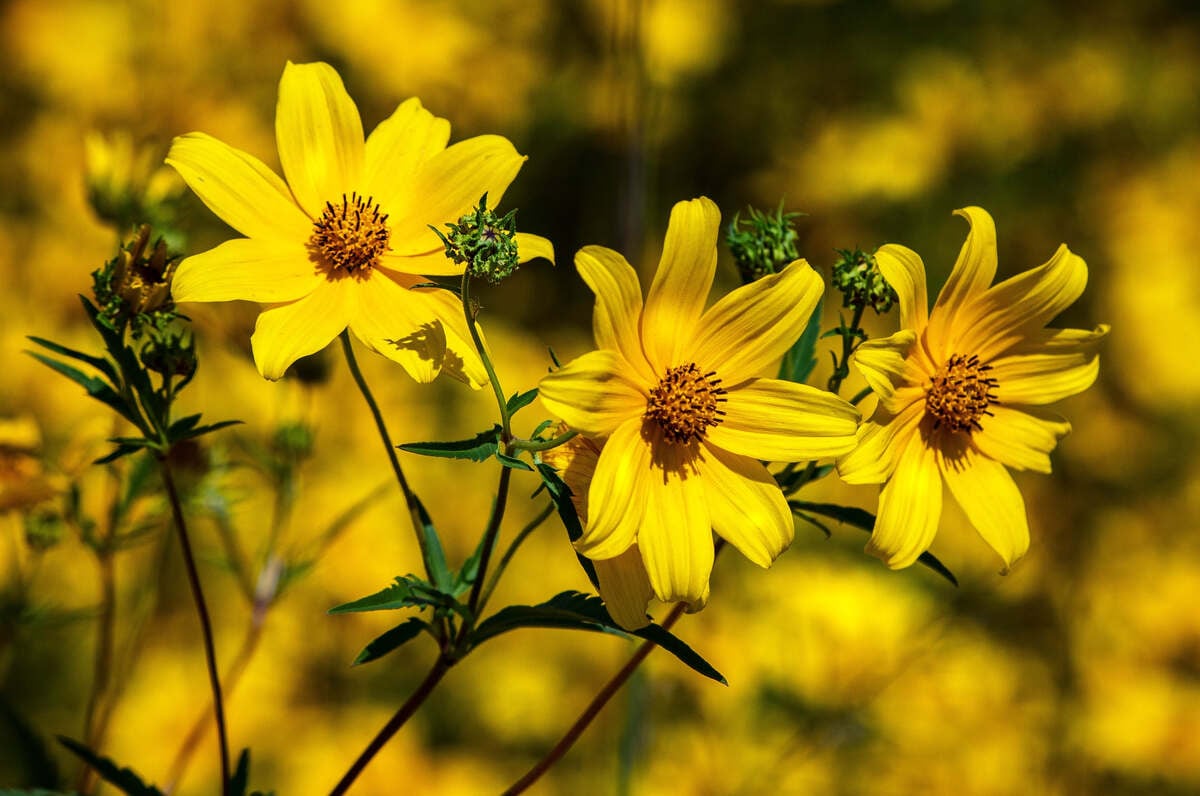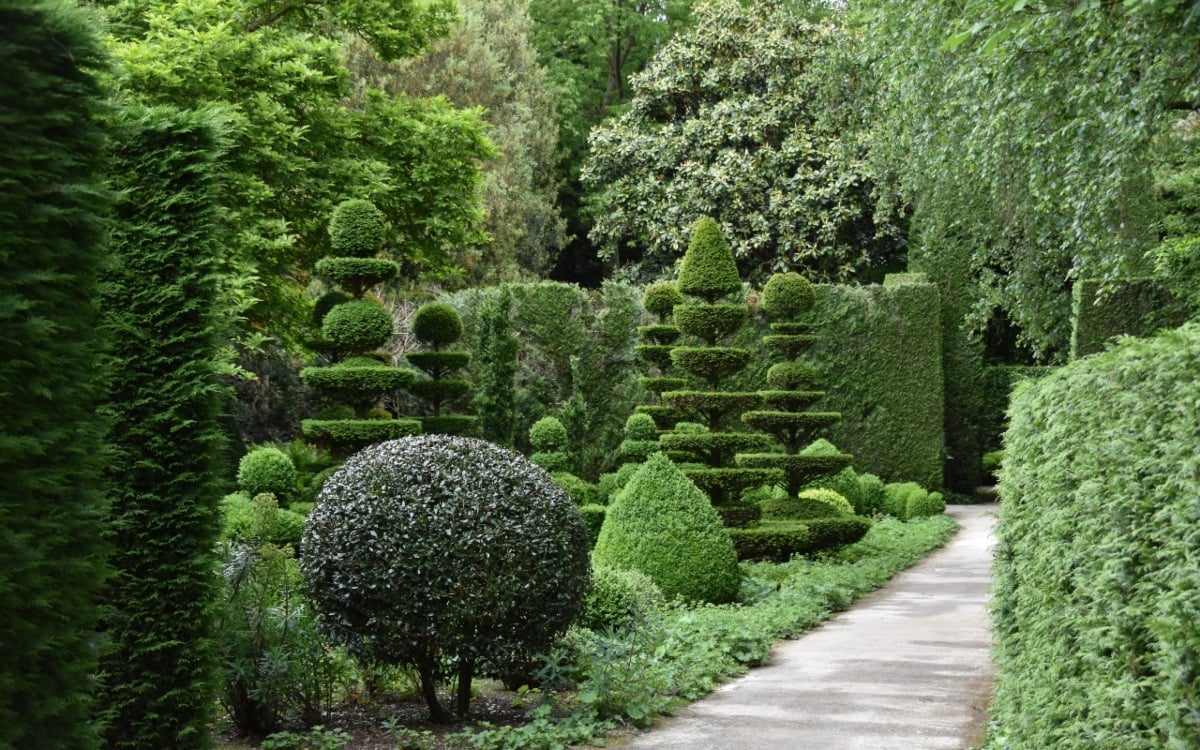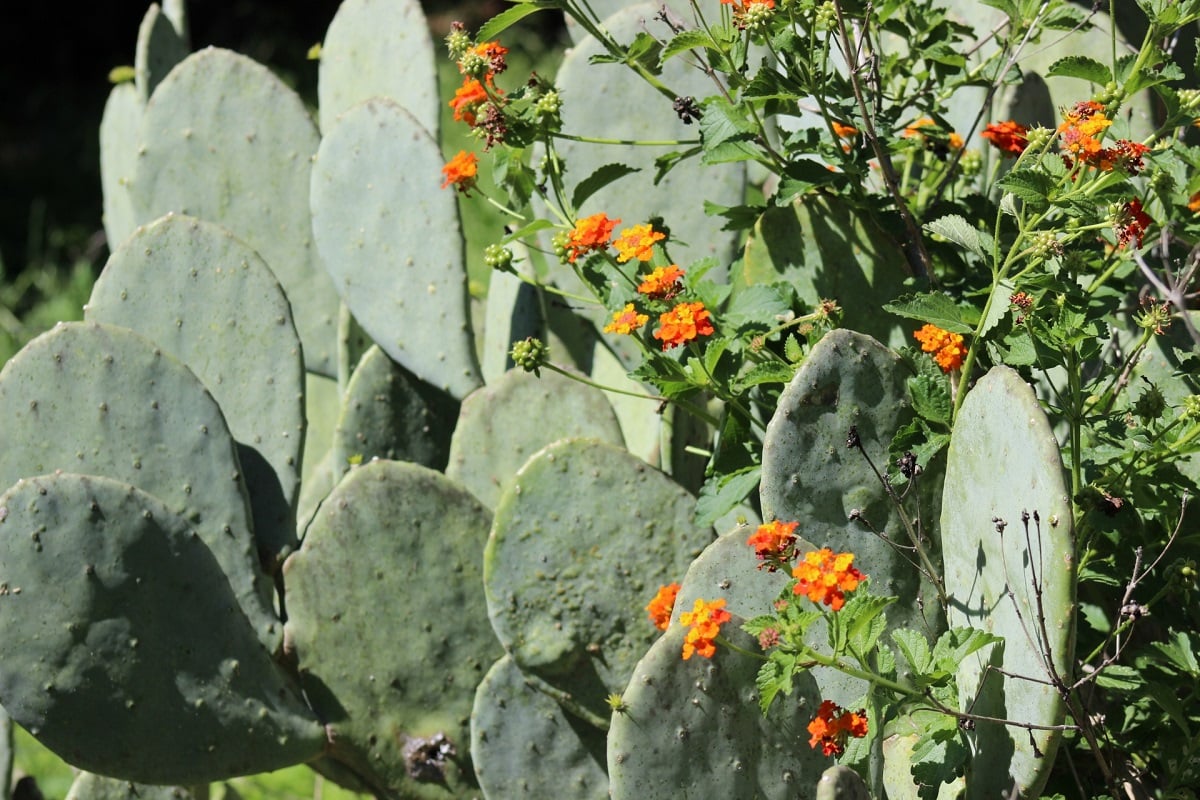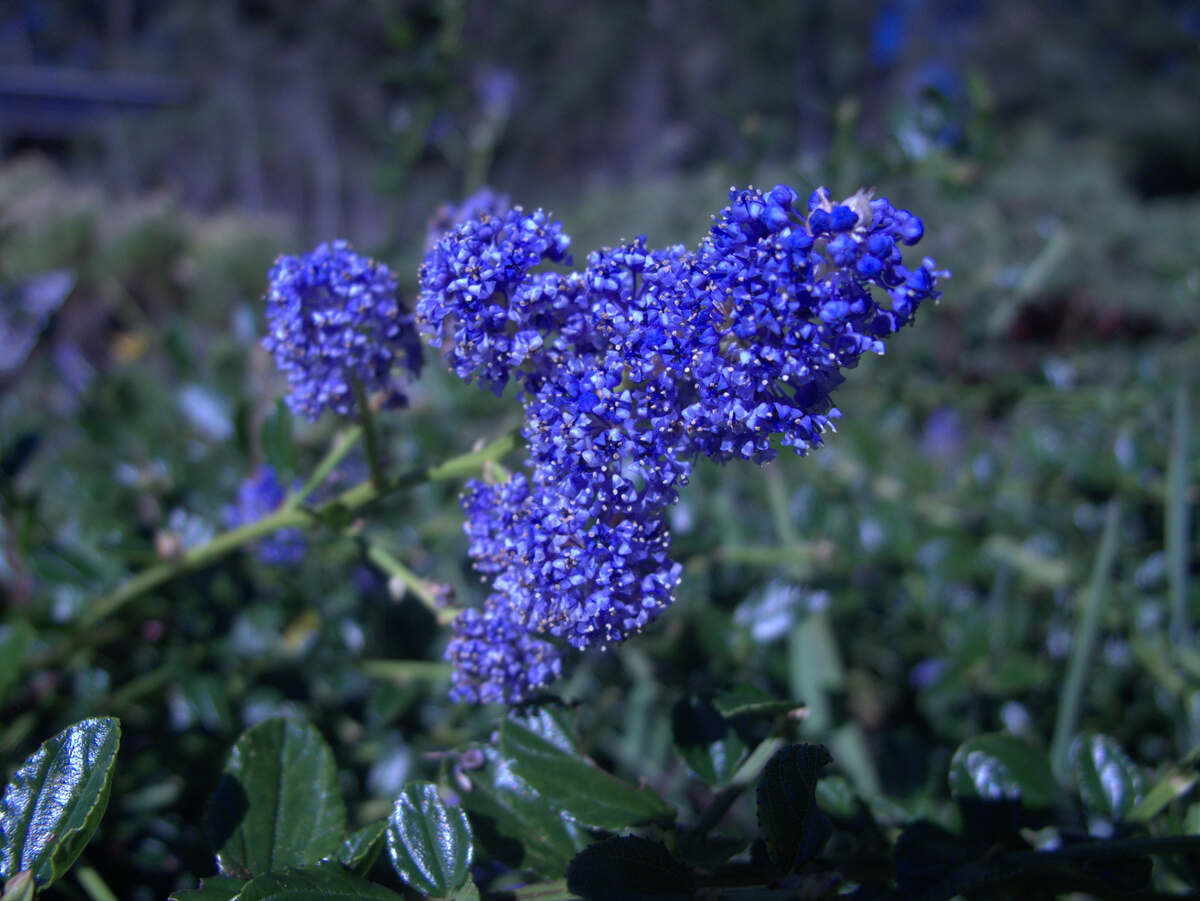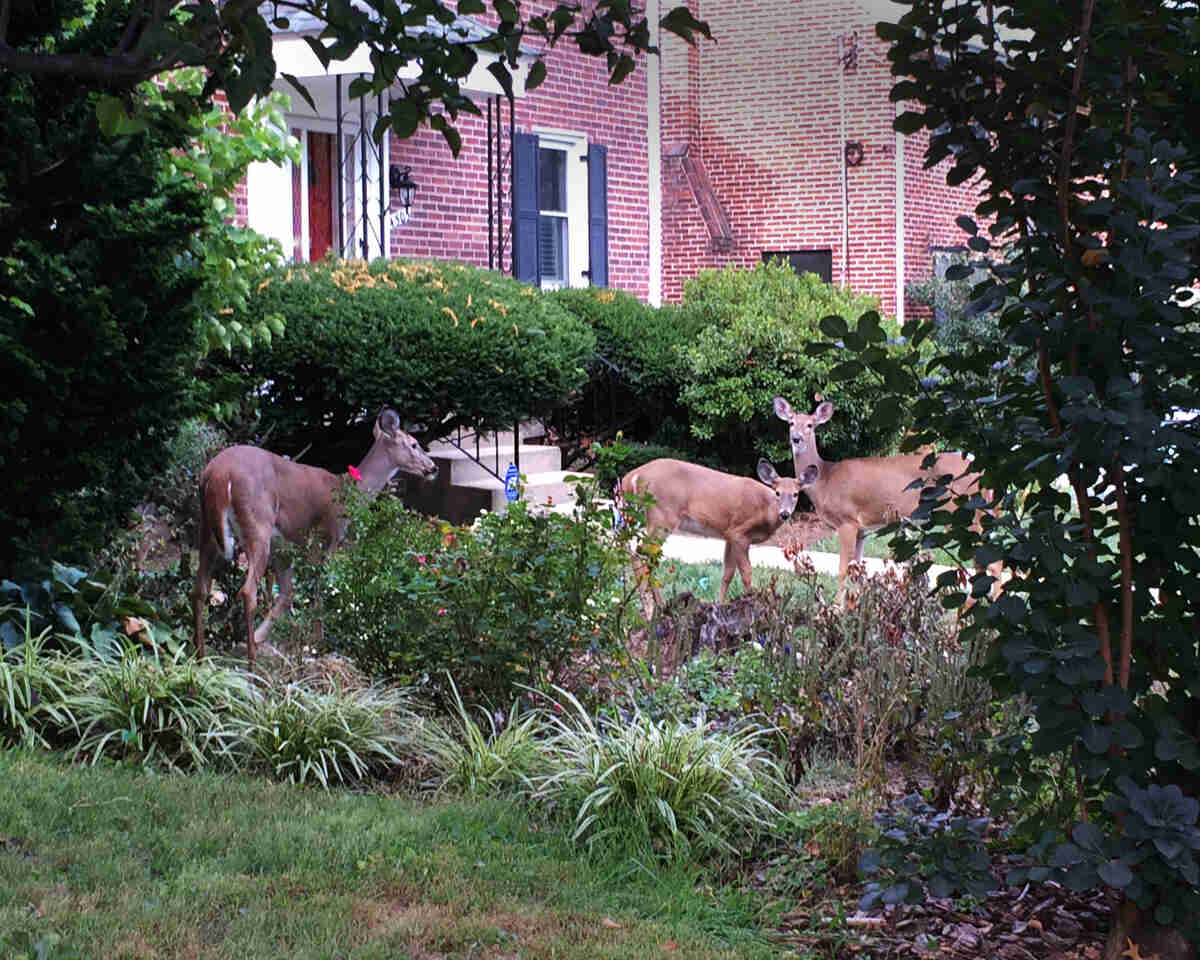Your grass isn’t the only thing that needs an occasional trim if you’re trying to keep your landscape looking its best. Your plants also need some care. Pruning 101 explains how to trim bushes, hedges, and shrubs to keep them looking their best and growing strong and healthy.
Giving your plants a much-needed haircut can feel daunting. You might not turn into a topiary master, but you’ll definitely have the know-how to bob the boxwoods, lop the lilacs, prune the privet, and shear the spirea.
Here’s the answer to landscaping dilemmas that keep cropping up:
Why Prune?
Pruning is both a growth retarding process and a bud-invigorating process. Buds on a pruned plant are exposed to more sunshine, and that sunshine encourages new growth and leads to larger leaves, flowers, and fruit.
There are many reasons to prune, says Patrick O’Malley, horticulture specialist with the Iowa State Extension in Van Buren County. “One is to shape the plant so it’s better-looking,” he says. “You can prune it to encourage flowering.”
Sometimes pruning keeps a formal hedge looking good, O’Malley said, and sometimes shrub trimming is needed to keep it from blocking a window or shading out other nearby plants. It can even encourage new growth in an old bush that’s not growing well.
A Science and an Art
“Pruning is considered by some horticulturists to be both a science and an art,” according to the University of California Extension’s guide to pruning. The science is in understanding the plant. The art is in seeing the beauty of the plant and how it responds to pruning, giving it a natural shape.
That’s right: A well-pruned landscape will look natural. “Good pruning is essentially invisible,” the guide says. If you must continually remove a lot of dead wood or trim shrubs that grow at a high rate, it may mean the plant is a bad fit for the landscape.
Before you Start to Prune
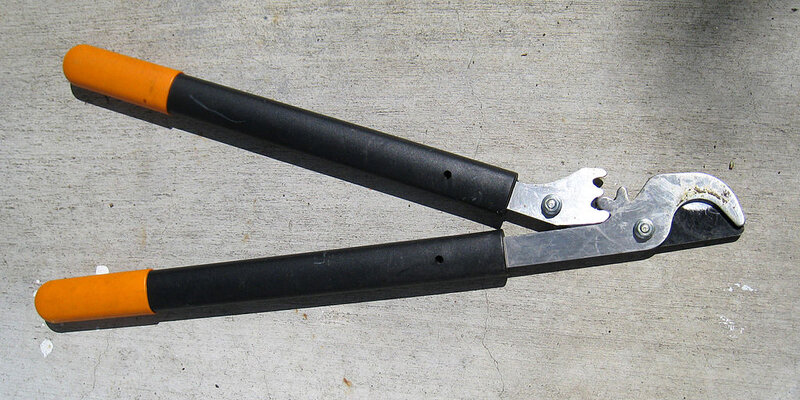
There are a few things you need to know and do before you start hacking at branches or giving your overgrown shrubs a haircut.
- First, know what you have. O’Malley recommends picking up an Extension publication on the particular type of bush, hedge, or shrub to figure out the appropriate pruning regimen.
- Second, make sure you have a landscaping plan. What do you want the landscape to end up looking like?
- Third, gather and sharpen your pruning tools.
- Finally, remove dead or diseased limbs first, followed by crossing branches that are rubbing against each other. Also, try to remove as many of the branches that are growing back toward the center of the tree or shrub as they will eventually be crossing branches and will rub.
How to Trim Bushes
Bushes range from small single- to multi-branched plants. They can become unruly depending on your climate and their growing season, so it’s best to learn their growing habits and keep them in check.
Best Time to Trim Bushes
When to trim bushes can vary based on cultivar. However, the Michigan State University Extension lists late winter or early spring as the best time for bush trimming — before the new growth starts up for the year. But in all cases, the wrong time for trimming a bush is high summer, after new growth has taken hold.
You can trim the bushes to shape them from March through July, but O’Malley warns most pruning should stop by August. After shaping, the tender new growth can be injured by the coming winter. But there are exceptions. Some plants can be pruned in the fall, especially native plants.
Flowering Bushes
Whether a plant flowers is an essential factor, O’Malley explains, as different flowering bushes will look better when pruned before flowering. In contrast, others, including lilacs, will look better when flowering naturally and pruned after. Find out when your plant flowers, and you’ll know when to prune.
| How, When to Prune Typical Types of Flowering Shrubs | |||
|---|---|---|---|
| Flowering Shrub Type | Examples | When to Prune | How to Prune |
| Spring-blooming shrubs (bloom on old wood) | Lilacs, forsythias, azaleas, weigelas, traditional bigleaf hydrangeas | Prune immediately after they finish flowering in spring. | Remove one-third to one-fifth of the oldest stems every two to three years. Prune those oldest stems back to 2 inches above ground level. |
| Summer-blooming shrubs (bloom on new wood) | Smooth and panicle hydrangeas, diervilla (bush honeysuckle), potentillas | Prune during late-winter dormancy, right before spring bud break. | |
| Everblooming shrubs (bloom on old and new wood) | Remontant or reblooming shrubs, such as Endless Summer hydrangeas | If you prune, prune right after spring flowering (the biggest flush of flowers) finishes. | Limit pruning to a minimum for maximum flowering. Thin and shape only as needed. |
Source: When to Prune Flowering Shrubs
Spring-flowering bushes: Their flower buds are produced on the previous year’s growth (old wood). If your plant flowers before the end of June, it is considered to be spring-flowering.
Summer-flowering bushes: Their flower buds are produced on the current year’s spring growth (new wood). If your plant flowers after the end of June, it is considered to be summer flowering.
The goal is to prune flowering bushes at a time to minimize damage to blooming, and that depends on when the plant blooms. When in doubt, check the Web for a guide to plants in your region or contact a local expert like an Extension agent or someone at your local nursery.
Tools Needed
There are several tools you can use, but dull tools are not what to use to trim bushes. They will create jagged cuts that are more prone to peeling or decay. “It’s good to have sharp tools, whether a pruning saw, loppers, or pruners,” O’Malley said. It is helpful to read tool reviews in case you need to go shopping for trimming tools.
- Powered or long-bladed shears: Can be used for shaping bushes
- Pruning shears or “clippers”: Best for branches between 0.25 and 0.5 inches
- Lopping shears: Best for branches up to 1.5 inches in diameter. A robust and lightweight tool, usually 16 to 30 inches long.
- Bypass-style clippers or loppers: For small cuts, blades overlap and slide beside each other when they cut
- Anvil style: Best for dead branches. The blade fits into a groove, but they tend to pinch. They help cut away entire branches that hand pruners can’t handle.
- Pruning saws: Good for the thickest branches, anything larger than an inch in diameter. They have rough teeth that prevent gumming, and most cut on the pull stroke for safety.
- Pole pruners: Either saws or lopping shears on a long pole reach those high branches.
Best Way to Trim Bushes
If you have thick, leafy bushes to trim, an electric or gas-powered hedge trimmer is likely the best bet to keep the bushes neat and trimmed and thick with foliage. However, for long-term health and beauty, several types of cuts work in unison for beautiful, healthy bushes.
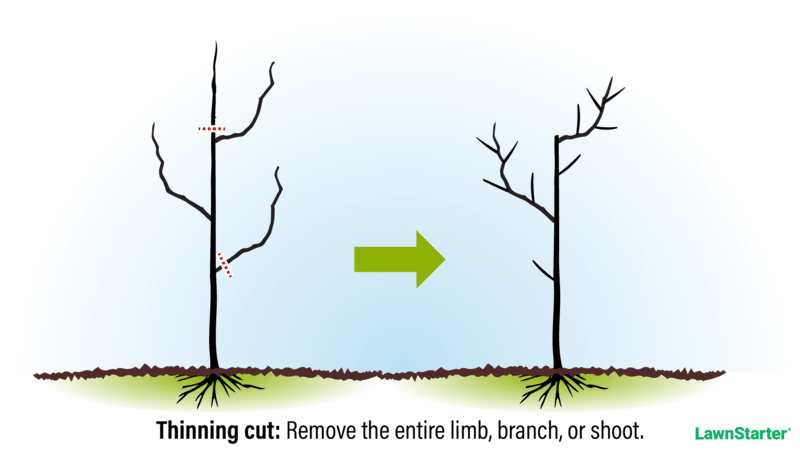
- Thinning: These cuts remove entire branches at their origin, creating a more open plant. This allows more sunlight and air into the bush’s center, stimulating interior growth and reducing disease due to increased airflow. Thinning cuts do not stimulate excessive new growth.
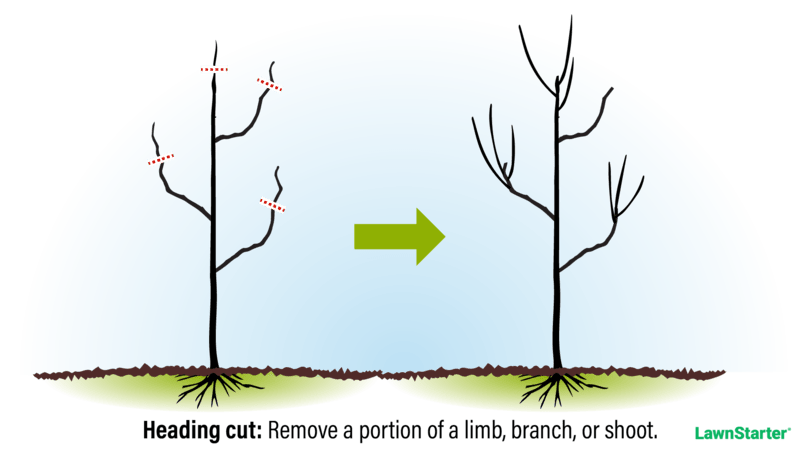
- Heading: Unlike a thinning cut, heading cuts remove only a portion of a branch back to a bud. In some plants, this stimulates excessive growth, resulting in an unwanted witches’ broom effect.
Heading cuts may be valuable if you want to reduce the number of buds on a branch to create more vigorous growth (fruit or flowers) from the remaining buds.
- Shearing: These cuts are made to shape a bush without worrying about where the buds are. (Shearing is most often done with electric or gas hedge trimmers.) Plants chosen for this type of treatment usually have many buds close together.
Shear bushes no more than once per year, and use thinning and heading cuts for long-term health and beauty. The cuts will end up near a bud anyway and encourage robust new growth but may reduce flowering.
Trimming tip: Prune young plants in their first year or two within one foot of the ground so stems are shortened and new growth is promoted below the cut.
Three-Cut Method
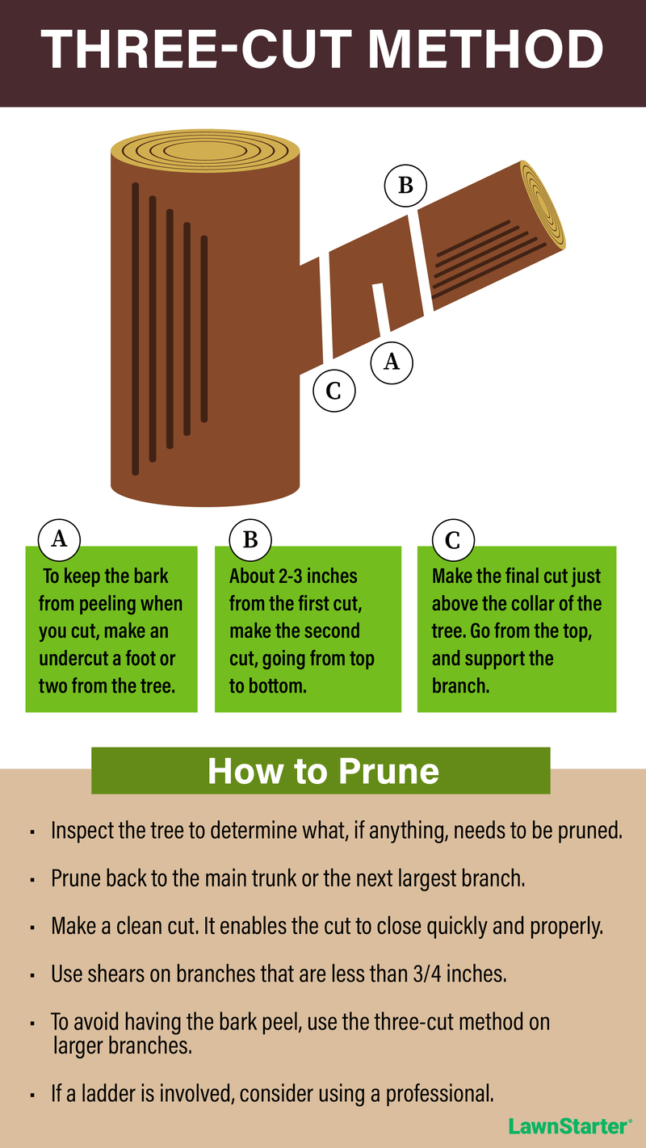
Both the University of California and Michigan State University recommend using the three-cut method for removing branches larger than one inch in diameter. It eliminates the weight of the branch before you make a final cut to prevent tearing.
- Make a small cut into the bottom of the branch at least 1 foot away from the branch collar on the trunk.
- Cut from the top down, just outside of the first cut, completing the cut all the way through and removing the branch.
- As you support the branch, cut just above the branch collar to provide a clean cut near the trunk that won’t tear or break from the weight of the branch.
How to Trim Hedges
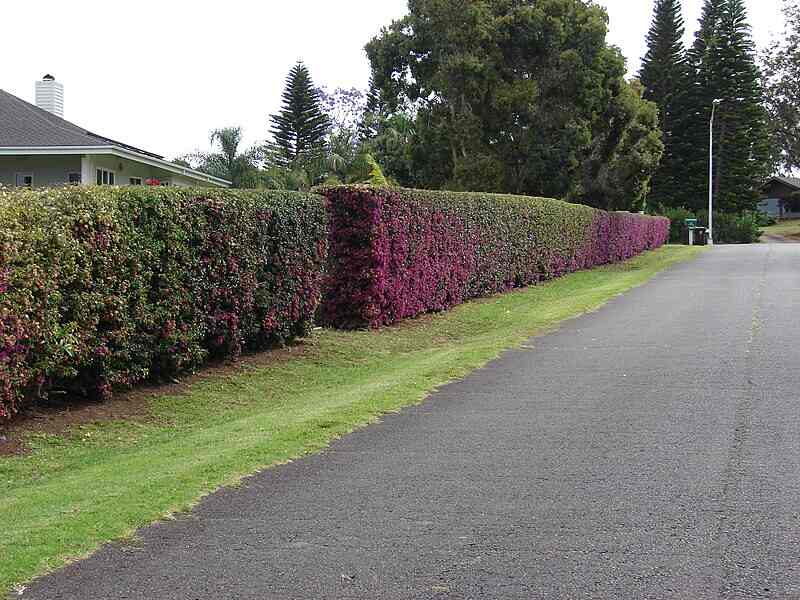
Hedges range from small to large plants grown closely in rows or geometric shapes. They are grown for privacy, as windbreaks, and aesthetically pleasing softscapes on your property. An unkempt hedge can become unruly and an eyesore, so it’s best to trim consistently.
When to Trim Hedges
The best time to trim hedges, especially if you’re doing a hard prune, is before they break dormancy in early spring. The plant needs to direct its energy into the new buds, so trimming off unwanted branches helps it get a fresh start.
We’ve all seen forsythia bloom in early spring. It rebounds happily with a great haircut. Evergreen hedges, such as boxwoods and hollies, take longer to fill in from a cut, so it’s crucial to trim them very early. Lilacs like a trim as soon as their lovely, fragrant flower heads turn brown, getting them ready for the following year’s show.
Trimming hedges as-needed during the summer months can be beneficial, but it’s essential to consider the main breeding season of birds in your area before you start. Hedges often serve as secure nesting areas for many birds, and any disturbance could harm their brood.
For further assistance: If you need clarification on your hedges, check the Web for a guide to plants in your region or contact a local expert like an Extension agent or someone at your local nursery.
Tools Needed
There are several tools you can use to trim hedges. Make sure they’re at their sharpest for clean cuts and oiled for the best performance.
- Powered or long-bladed shears: Can be used for shaping hedges
- Pruning shears or “clippers”: Best for branches between 0.25 and 0.5 inch
- Lopping shears: Best for branches up to 1.5 inches in diameter. A strong, lightweight tool, usually 16 to 30 inches long.
- Hedge trimmers: Good for powering through larger, established hedges while trimming and shaping
Best Way to Trim Hedges
For homeowners with hedges, an electric or gas-powered hedge trimmer is the best bet to keep them neat and trimmed quickly. Hedge trimmers are not the only option available, and some homeowners prefer to use pruning shears instead. You can make several types of cuts according to the look or height you want to achieve.
- Thinning: These cuts remove entire branches at their origin, creating a more open plant. This allows more sunlight and air into the bush’s center, stimulating interior growth and reducing disease due to increased airflow. Thinning cuts do not stimulate excessive new growth.
- Heading: Heading cuts remove a portion of a branch back to a bud. This can stimulate excessive growth, causing an unwanted witches’ broom effect. Heading cuts can be useful if you want to reduce the number of buds on a branch to promote more vigorous growth (fruit or flowers) from the remaining buds.
- Shearing: This method shapes bushes without considering the bud placement. It is typically done with electric or gas hedge trimmers. Plants chosen for shearing have densely packed buds. The cuts are made close to a bud, promoting vigorous new growth but potentially reducing flowering.
Trimming tip: Shear hedges at most once per year. Use thinning and heading cuts for long-term health and beauty.
Power tool manufacturer Stihl offers advice on trimming different styles of hedges, saying:
- Cut the sides of the hedge vertically in a sweeping arc-shaped movement.
- Cut the top of the hedge, keeping the trimmer almost horizontal, with a slight angle toward the direction of the cut.
- Use a scything motion to clear clippings from the top of the hedge as you go.
Prune young hedge plants in their first year or two within 3 to 5 inches of the ground so stems are shortened, and new growth (shoots) are promoted at the plant’s base.
How to Trim Shrubs
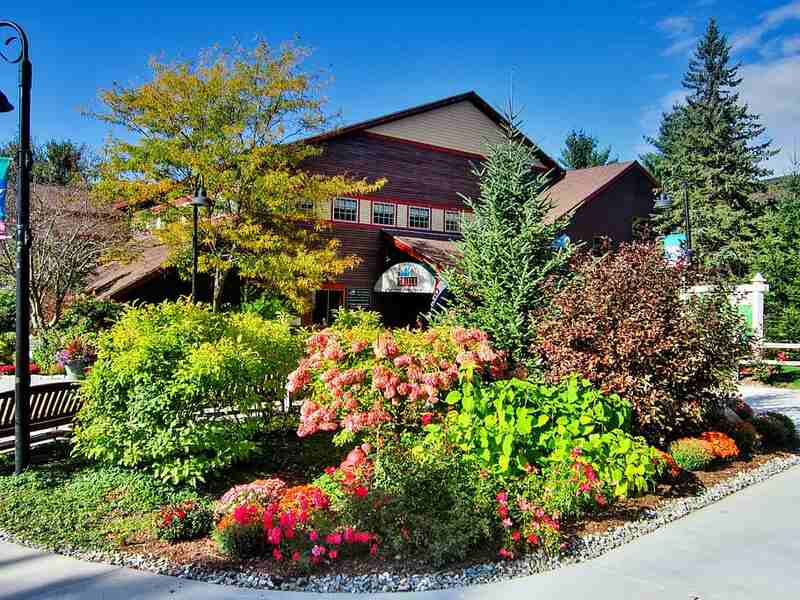
Though bushes and shrubs are often used interchangeably, shrubs are widely considered woody perennials that live longer than two years. They are the staple of many landscape designs and benefit significantly from trimming in their flowering, growth, and structural beauty.
Best Time to Trim Shrubs
Non-flowering shrubs should be pruned in dormancy in early spring. If you trim them too early or too late, their nutritional needs may be interrupted as they travel to the essential parts of the plant for the dormant season.
As with bushes, a shrub’s flowering time is also another critical factor. Spring-flowering bushes and plants should be pruned right after flowering since their flower buds are produced on the previous year’s growth, not new spring growth.
Again, if your flowering shrub blooms before the end of June, it blooms on last year’s growth. If it flowers after the end of June, it blooms on new year’s growth. If you are unsure of your shrub’s flowering season, check the Web for a guide to plants in your region. You can also contact a local expert like an Extension agent or a local nursery.
Tools Needed
There are several tools you can use to trim shrubs. Avoid jagged cuts with sharp tools that are oiled and sharpened regularly and kept in a dry location.
- Powered or long-bladed shears: Can be used for shaping shrubs
- Pruning shears or “clippers”: Best for branches between 0.25 and 0.5 inch
- Lopping shears: Best for branches up to 1.5 inches in diameter. A strong, lightweight tool, usually 16 to 30 inches long.
- Bypass-style clippers or loppers: For small cuts, the blades overlap and slide beside each other when they cut.
- Anvil style: The blade fits into a groove. They tend to pinch, but they help cut away dead branches that hand clippers can’t handle.
- Pruning saws: Good for large branches greater than an inch in diameter. They have rough teeth that prevent gumming and most cut on the pull stroke.
- Pole pruners: Either saws or lopping shears on a long pole to reach high branches.
Best Way to Trim Shrubs
When trimming shrubs, it’s essential to be cautious and take your time. Unlike bushes, shrubs are usually densely branched and have thicker limbs. Follow these three types of cuts for best results:
- Thinning: Eliminate excess growth by cutting off entire branches. This action creates more space within the plant, enabling increased sunlight and airflow to reach the center, which stimulates robust growth and minimizes the likelihood of disease.
- Heading: Trimming a portion of a branch back to a bud can stimulate desired growth and reduce the number of buds on the branch. However, in some plants, this can result in excessive leggy growth, which leads to an undesired witches’ broom effect.
- Shearing: Shape the bush without worrying about the location of buds. Use hedge trimmers for this purpose. Plants chosen for shearing usually have many buds close together. Although the cuts may end up near a bud and encourage robust new growth, they may also reduce flowering.
Trimming tip: Limit shearing shrubs to once a year. For long-term health and beauty, focus on thinning and heading cuts. Prune young plants in their first year or two within one foot of the ground so stems are shortened, and new growth is promoted below the cut.
As mentioned earlier, the three-cut method is excellent for removing branches larger than 1 inch in diameter and eliminating the weight of the branch before you make a final cut.
- Make a small cut into the bottom of the branch at least 1 foot away from the branch collar on the trunk.
- Cut from the top down, just outside of the first cut, completing the cut all the way through and removing the branch.
- As you support the branch, cut just above the branch collar to provide a clean cut near the trunk that won’t tear or break from the branch’s weight.
Safety First
Purdue University Extension lays out safety rules you should follow before trimming bushes, hedges, or shrubs in your landscape:
- Call in a certified arborist for large, unmanageable projects.
- Keep your equipment sharp and in good repair.
- Use equipment only for the job it was designed to do.
- Be aware of electric lines. If a power line is touching a tree limb, call the power company and stay clear of the tree.
- Only climb a tree with a safety rope, even when using a ladder.
- Keep fingers clear when using hand clippers.
- Wear eye protection while pruning and handling limbs and brush.
Common Mistakes
| Correct | Incorrect |
|---|---|
| ● Make a few large cuts instead of many small cuts. | ● Don’t “stub” a plant by just lopping it off at the top. That encourages multiple replacement branches to grow. |
| ● Prune just above a healthy bud, with the bud pointing in the direction you want the plant to grow. Cut at a 45-degree angle, with the low point of the cut opposite the bud. | ● Don’t cut too far from or too close to the bud you want to encourage. |
| ● Leave a “collar” when cutting off a branch. | ● Don’t cut branches flush against the trunk. |
| ● Open up a plant with thinning cuts. | ● Don’t cut more than one-third of the plant’s height in any one season. |
| ● Cut at the proper time of year — usually late winter or early spring, though there are exceptions. | ● Don’t be afraid to prune — your plant actually needs it to remove dead wood and take on the shape you want. |
O’Malley says a common mistake he sees is simply not pruning during the proper pruning period and cutting too much off the plant. Homeowners need to be careful when cutting and make sure there are still some dormant buds below the cut so that the plant can recover.
“Sometimes when folks cut into old wood, it doesn’t grow back,” he said. “That’s because they cut below those dormant buds, where the new growth would normally pop out after pruning.”
FAQ: How to Prune Bushes, Hedges, and Shrubs
Can you Cut a Bush All the Way Down?
Yes, cutting bushes down is called rejuvenation pruning (aka renovation pruning). It is done mainly to deciduous shrubs to rejuvenate the color of the stems, produce more flowers, or control the plant’s size.
How Far Back Can You Trim Hedges?
Many experts recommend pruning at most one-third of the hedge in one growing season. Plants need the leaves for transpiration, which moves the water from the roots throughout.
What Should I Do With My Hedge Clippings?
You can have your cuttings composted by your local municipality if they offer that service or compost them in your own backyard.
What if I Can’t Cut It?
Pruning landscaping plants isn’t for the faint of heart, but hopefully, you’re feeling confident. Bushes, hedges, and shrubs don’t yell when you cut them, but they absolutely tell on you when you do it wrong.
Still not sure about DIY trimming? Drop the loppers, ditch the snips, and call a professional landscaper in your area to trim tall hedges, prune trees, or handle all of your lawn care chores. Your beautiful landscape will reward you with “shear” happiness.
Main Image Credit: Rawpixel
